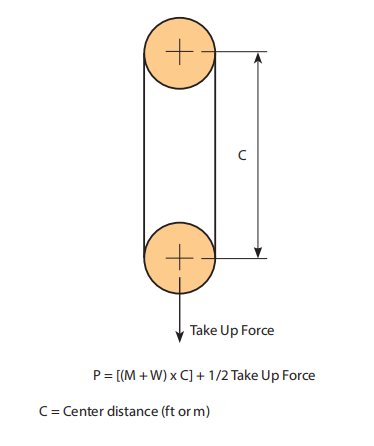Introduction
A mindful evaluation of the situations surrounding a conveyor is important for accurate conveyor chain assortment. This section discusses the fundamental considerations demanded for successful conveyor chain variety. Roller Chains are often used for light to moderate duty material managing applications. Environmental disorders may perhaps call for using particular resources, platings coatings, lubricants or even the capability to operate without having further external lubrication.
Primary Information and facts Demanded For Chain Assortment
? Type of chain conveyor (unit or bulk) such as the strategy of conveyance (attachments, buckets, by means of rods etc).
? Conveyor layout which include sprocket spots, inclines (if any) and also the variety of chain strands (N) to get used.
? Amount of material (M in lbs/ft or kN/m) and style of materials to become conveyed.
? Estimated excess weight of conveyor parts (W in 
? Linear chain pace (S in ft/min or m/min).
? Environment through which the chain will operate such as temperature, corrosion circumstance, lubrication ailment and so on.
Phase 1: Estimate Chain Stress
Utilize the formula under to estimate the conveyor Pull (Pest) and then the chain stress (Test). Pest = (M + W) x f x SF and
Check = Pest / N
f = Coefficient of Friction
SF = Speed Aspect
Step 2: Produce a Tentative Chain Selection
Utilizing the Test value, produce a tentative variety by selecting a chain
whose rated operating load better than the calculated Test worth.These values are proper for conveyor service and therefore are diff erent from people proven in tables with the front with the catalog that are linked to slow speed drive chain utilization.
Also to suffi cient load carrying capacity normally these chains needs to be of the particular pitch to accommodate a sought after attachment spacing. As an example if slats are to become bolted to an attachment every one.5 inches, the pitch of the chain picked must divide into 1.5?¡À. So one particular could use a forty chain (1/2?¡À pitch) with all the attachments each 3rd, a 60 chain (3/4?¡À pitch) using the attachments every single 2nd, a 120 chain (1-1/2?¡À pitch) with the attachments each and every pitch or a C2060H chain (1-1/2?¡À pitch) with all the attachments just about every pitch.
Step 3: Finalize Assortment – Determine Actual Conveyor Pull
After producing a tentative choice we need to confirm it by calculating
the real chain stress (T). To do this we must fi rst calculate the real conveyor pull (P). From your layouts shown to the proper side of this web page select the suitable formula and determine the complete conveyor pull. Note that some conveyors can be a combination of horizontal, inclined and vertical . . . in that case calculate the conveyor Pull at every segment and add them collectively.
Step four: Calculate Greatest Chain Tension
The maximum Chain Tension (T) equals the Conveyor Pull (P) as calculated in Step three divided by the amount of strands carrying the load (N), occasions the Pace Factor (SF) proven in Table 2, the Multi-Strand Factor (MSF) shown in Table three and also the Temperature Aspect (TF) shown in Table four.
T = (P / N) x MSF x SF x TF
Step five: Test the ?¡ãRated Operating Load?¡À of your Selected Chain
The ?¡ãRated Doing work Load?¡À of the chosen chain ought to be greater than the Highest Chain Tension (T) calculated in Phase 4 over. These values are ideal for conveyor support and are diff erent from those shown in tables with the front with the catalog which are related to slow speed drive chain utilization.
Phase 6: Check out the ?¡ãAllowable Roller Load?¡À of the Picked Chain
For chains that roll to the chain rollers or on best roller attachments it truly is required to examine the Allowable Roller Load?¡À.
Note: the Roller load is established by:
Roller Load = Wr / Nr
Wr = The total weight carried from the rollers
Nr = The quantity of rollers supporting the weight.
